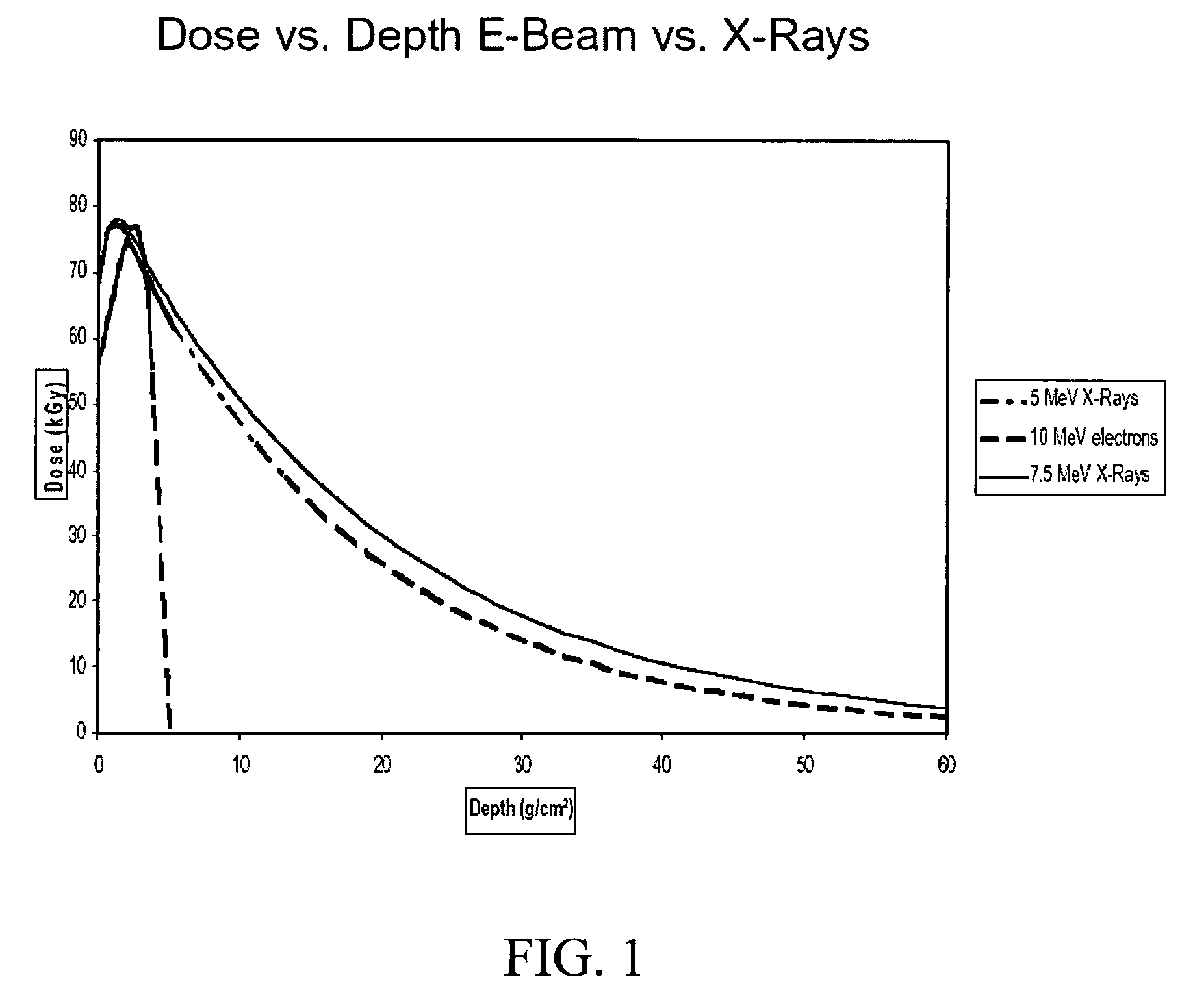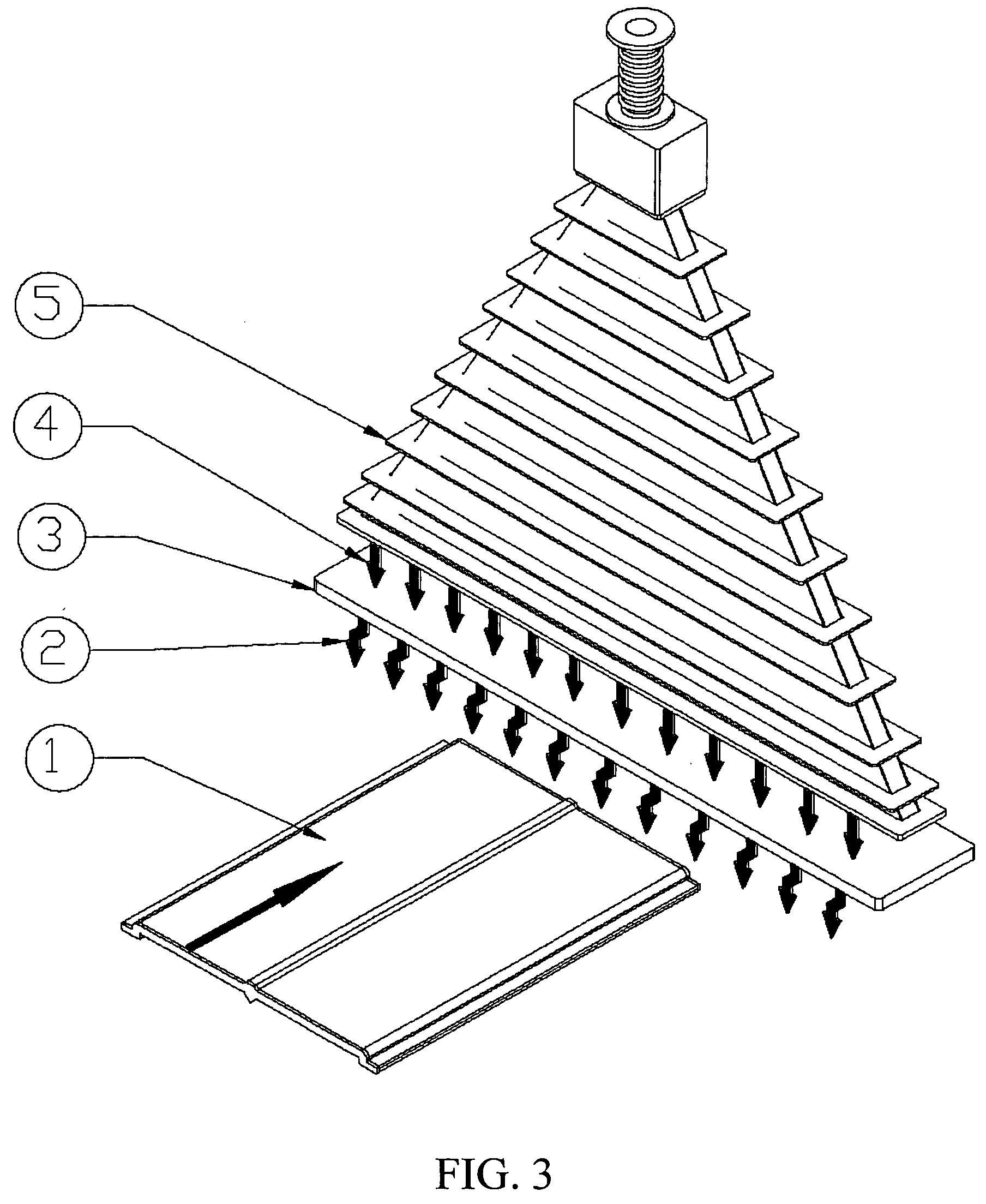Processes for chemically affecting reactive materials with X-rays
a reactive material and x-ray technology, applied in the field of x-ray curing monomeric, oligomeric, or polymeric materials, can solve the problems of long cure cycle, high energy consumption, stress induction, etc., and achieve the effects of less complicated, fast cure cycle, and low energy consumption
- Summary
- Abstract
- Description
- Claims
- Application Information
AI Technical Summary
Benefits of technology
Problems solved by technology
Method used
Image
Examples
example 1
X-Ray Curing of Wood Polymer Composites
[0075]Using facilities at the State University of New York College of Environmental Science and Forestry (SUNY-ESF), a reactant formulation of vinyl monomers found to penetrate the cell walls of wood were impregnated into wood using a well known vacuum assisted impregnation process.
[0076]Preliminary tests performed on 1 cm thick pieces of impregnated maple at the NEO Beam facility (a joint venture between Mercury Plastics Corp. and Kent State University) using a 5 MeV Dynamitron, suggested that with high dose-rate electron beam processing, a dose of 150 kGys or more was required to polymerize the impregnate within the wood. The concomitant heat generated also raised concerns about monomer volatility such that multiple underbeam passes had to be used to limit the temperature rise.
[0077]To demonstrate the viability of X-ray processing, 17 cm thick blocks of wood were impregnated with the same penetrant. With low dose-rate X-rays (˜2 kGy per minut...
example 2
X-Ray Curing of Adhesives
[0080]Five commercially available, photon-activated adhesives obtained from the Dymax Corporation (Torrington, Conn.) and from the Loctite division of the Henkel Corporation (Rocky Hill, Conn.) were found to bond aluminum-to-ceramic. Aluminum and ceramics differ by one order of magnitude in their coefficients of thermal expansion and, in addition, these materials differ significantly in thermal conductivity, with ceramic being a poor conductor of heat and aluminum known for its high thermal conductivity. The ceramic samples used were 3.6 g / cc alumina obtained from Superior Technical Ceramics Corporation. Thin (3 mm) aluminum samples cut to a standard 2.5 cm width were used to allow for both electron beam curing and X-ray curing of the adhesives in order to compare these two radiation processes. These were adhered to ceramic pieces also cut to 2.5 cm width.
[0081]Adhesive bonded specimens suitable for testing in tension, per ASTM International method D-1002 St...
example 3
X-Ray Curing of Molded Composites
[0082]Simulated molds were made using standard twelve-cup steel baking trays with a 7 cm diameter top, a 5 cm diameter base and 3.4 cm depth per cup. Samples of carbon fiber twill (140 g / m2 and 280μ thick obtained from Applied Vehicle Technology—Indianapolis, Ind.) were soaked with a formulation based upon an acrylate modified epoxy oligomer, provided by Strahmore Products (Syracuse, N.Y.). These fiber-matrix systems were then inserted and squeezed between two identical cups and then X-ray cured in the steel baking tray mold with a 2 cm thick piece of aluminum plate placed above it. The thickness of the aluminum plate is sufficient to preclude penetration from even 10 MeV electrons. Such simulated molds were used in lieu of cutting aluminum metal molds themselves for these initial experiments. The fitting of the upper and lower cups eliminated air from the simulated mold. The viscosity of the formulated matrix material was such as to permit flow and ...
PUM
| Property | Measurement | Unit |
|---|---|---|
| energy | aaaaa | aaaaa |
| energy | aaaaa | aaaaa |
| energy | aaaaa | aaaaa |
Abstract
Description
Claims
Application Information
 Login to View More
Login to View More - R&D
- Intellectual Property
- Life Sciences
- Materials
- Tech Scout
- Unparalleled Data Quality
- Higher Quality Content
- 60% Fewer Hallucinations
Browse by: Latest US Patents, China's latest patents, Technical Efficacy Thesaurus, Application Domain, Technology Topic, Popular Technical Reports.
© 2025 PatSnap. All rights reserved.Legal|Privacy policy|Modern Slavery Act Transparency Statement|Sitemap|About US| Contact US: help@patsnap.com



